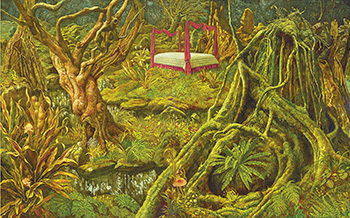EXHIBITED:
The 3nd Doctoral Course Exhibition , Tsukuba Museum of Art,
Tsukuba, December 26, 2006 - January 8, 2007
This painting to be sold with a certificate of authenticity issued by Gallery Hirota Bijutsu, Tokyo.
Catalogue Note:
Hiroaki Kano was born in Yamagata Prefecture, Japan, in 1983. He graduated from the University of Tsukuba School of Art and Design in 2005, and completed the second half of AA doctoral program in 2010. Nominated by the Agency of Cultural Affairs of Japan, he studied art in Florence, Italy, from 2010 to 2012. He currently holds the position of Associate Professor at Nara University of Education. The works of Hiroaki Kano are vibrant and sumptuous. All of the panoramas he has experienced since his school days are blended into his oil paintings and photographic works. Regardless of whether it is his birthplace, Yamagata Prefecture, the University of Tsukuba, the Florence of his time abroad, or the everyday sceneries of Nara—all that comes into his view is extracted and incorporated into his paintings in the way that artists are always eager to incorporate their impressions of different sceneries into the same work.
In the world of Hiroaki Kano's painted artworks, enormous trees fill the canvas and our vision is largely occupied by the presence of sturdy tree trunks, bushy branches and verdant leaves. Animals, miscellaneous objects, daily commodities, and all sorts of toppled things are lined across the canvas, either in some sort of order or at random, like the way trash is scattered upon the ground. The artist uses bright colors and delicate strokes to recreate a chaotic and orderless world. This disorderly scene is precisely the world in which we live; hidden under the layers of green are all the unknown burdens of today's society. Indeed, the artist does seem to accentuate this sort of complexity as a sophisticated part of the painting by enabling the viewer to gradually experience the appeal of surrealism through observation of the amusing.
Garden(diptych) is Hiroaki Kano's most representative work. In this painting resembling a scene within a rain forest are embodied the various environments of the world in which we live: the urban environment, the natural environment, the body's internal environment, the Internet-connected environment. The evolution of these environments is engulfing and consuming our real world and threatening our ability to discern—even within the same spatial sphere, we are unable to distinguish the attributes of the time that is passing. Into such a complex environment, a single red bed made of European wood is visible in the distance. Unlike the artist's previous approach to his works in that objects are scattered at random, spatial configuration is what makes this work unique. Hiroaki Kano was once obsessed with the display of large quantities of things in his works, an approach that made it difficult for viewers to discern the world's structure and narratives that lie within.
The bed, the sole object embodied in Garden (diptych), is interpreted as a strong desire for a return to the uterus. Alien-looking flowers, strange grasses and sturdy plant stems surround the red bed, which in this composition is depicted as the mother's uterus and the place where the happiness we desire can be attained. So exposed, however, in such bizarre settings, it also becomes a place of origin, overburdened with desire, that can never be again returned to. In the face of an artwork like this, our sensations are transcended and we are unable to distinguish between the real and the imagined. This is precisely the sophisticated perspective offered to us in Hiroaki Kano's world, a perspective that has given us such strong, lasting impressions. The intense sensibilities inspired by the work's dynamic movement of shadows demonstrate that it is indeed possible to portray and represent the sense of pervasive boundlessness.
